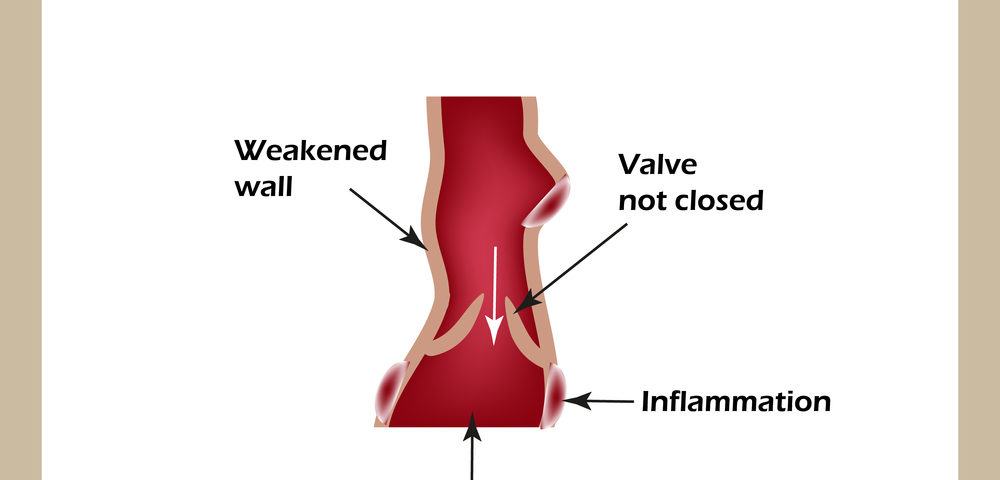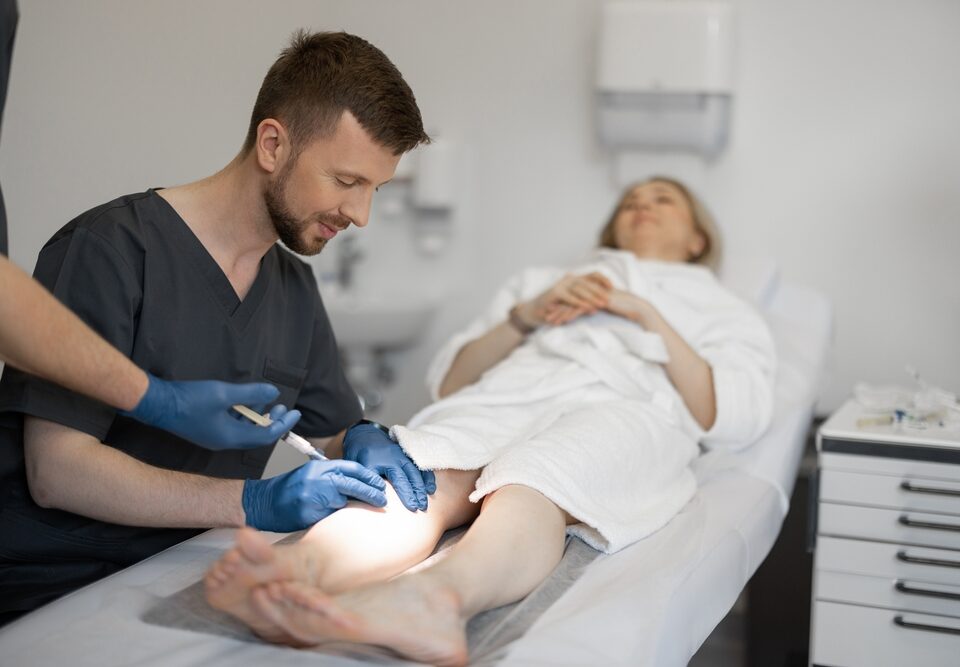
Exercise and Leg Veins
September 20, 2018
Leg Pain After Exercise?
September 28, 2018Venous leg ulcers are the most common type of skin ulceration and are clear sign of venous insufficiency. What’s more, these ulcers can occur gradually, and many patients don’t notice signs of compromised vein health until the skin has broken down.
However, being aware of the causes and symptoms of venous leg ulcers can help individuals recognize and treat the issue before it becomes more serious. Here’s what you need to know.
What Is a Venous Leg Ulcer?
A venous leg ulcer is when the skin above a damaged vein breaks down and underlying tissue becomes visible. It typically occurs above the ankle and is more prevalent in women and older individuals.
If left untreated, the ulcer can grow in size and pose problems to the affected leg.
What Are the Causes of Venous Leg Ulcers?
When vein valves become diseased or damaged, they can allow blood to flow backwards and pool in the legs and lower extremities. This added volume can then increase venous pressure and cause fluid to ooze from the veins under the skin.
Consequently, skin may show signs of swelling, thickening, and damage. If these issues are not immediately addressed, skin can breakdown and produce an ulcer.
What Are the Symptoms of a Venous Leg Ulcer?
The first visible sign of a venous leg ulcer is discoloration of the skin. It tends to turn a dark red or purple above the vein as a result of blood leaking out.
Patients may then note that the skin looks and feels thick, dry, or itchy. It’s important to seek medical intervention at this time. Otherwise, an ulcer is likely to form, and it may be accompanied by heavy or achy legs.
Finally, if the wound becomes infected, it will present with odor, pus, tenderness, and a red and inflamed border.
How Can a Venous Leg Ulcer Be Treated?
Compression bandaging is the most effective way to treat an ulcer once it’s developed. Under the guidance of a vein specialist like Dr. Yash Kumar and Dr. James Leo Harry, the leg and ankle will be wrapped tightly.
The dressing needs to be changed weekly, and it’s best to elevated the legs prior to applying a new bandage.
Additionally, antibiotics, skincare, dietary changes, smoking cessation, and iron supplements may all help in the event of a venous leg ulcer.
To learn more about the causes and symptoms of venous leg ulcers, please call our office today to schedule a consultation.



